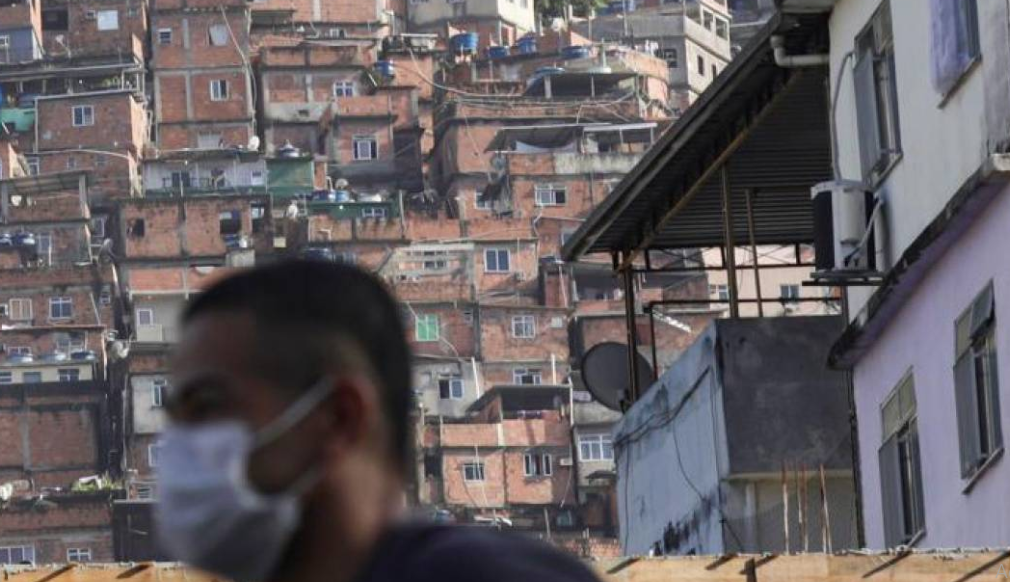By Oscar Lopez and Anastasia Moloney
BOGOTA, Colombia, Thurs. March 19, 2020 (Thomson Reuters Foundation) – Standing beside her food stall in an unusually quiet street in Bogota, Diana Cardenas worries if she can sell enough fruit as the coronavirus devours her daily trade.
With the virus spreading fast across Colombia, Latin America and the Caribbean – records show at least 1,400 cases with a death toll of 19 – governments want residents to work from home and are limiting travel to contain the deadly spread.
“It’s been really bad the last few days. I’m worried about not making enough money to pay the rent,” said Cardenas, a single mother of three who lives alongside millions in Bogota’s southern hillside slums.
“I pray I don’t get the virus because I have to keep working to feed my children.”
The fast-spreading disease that jumped from animals to humans in China has infected about 200,000 people and caused nearly 8,500 deaths in 164 nations, triggering emergency lockdowns and injections of cash unseen since World War Two.
Among the worst affected could be the poor, experts say, citing poor nutrition, cramped living conditions and ill health.
About 113 million people across Latin America and the Caribbean – nearly one in five – live in slums.
Millions like Cardenas are part of the informal economy, earning cash in hand as cleaners, maids, street vendors, and on construction sites.
Health experts say slum dwellers in Latin America’s biggest cities risk bearing the brunt of the global pandemic due to lost income coupled with dire living conditions.
Throughout the region, poor neighborhoods crammed with shacks built from bricks, scrap metal and wood with little or no access to running water or health facilities are a common feature of the urban landscape and sprawl.
“The effects (on slums) will be devastating,” said Angela Aidala, a researcher at Columbia University’s Mailman School of Public Health.
Densely populated slum neighborhoods with big families – often sharing one-bedroom homes and beds – creates ideal conditions for disease transmission, scientists say.
“It could be like a fire and just spread throughout the community,” said Lee Riley, chair of the Division of Infectious Disease and Vaccinology at Berkeley University in California.
Jarbas Barbosa, assistant director of the Pan American Health Organization (PAHO), urged governments to pay “special attention” to slums and ensure access to basic healthcare.
“We still need to get more evidence but we are concerned that people, eight … to 12 people, living in small houses… can be an accelerator for the transmission,” Barbosa told the Thomson Reuters Foundation.
“They (countries) need to prepare for the next phase because probably some countries will face widespread community transmission. We cannot predict when this will happen but we need to be prepared now,” he said.
RISING CORONAVIRUS DANGER
The new coronavirus has been slower to reach Latin America – home to some 640 million people – than much of the world.
But confirmed infections of coronavirus are rising daily, with Brazil reporting at least 234 cases and Chile 201.
While the region has yet to be hit as hard as Asia or Europe, in the past week Latin America governments have ramped up measures to slow the spread of the outbreak.
Peru is putting military personnel on the streets, while Costa Rica and Colombia are closing their borders.
Countries are also ordering curfews, cancelling public events and closing schools and universities.
Despite such measures, slum dwellers face a heightened risk.
“Based on other respiratory infections … we know that the rates of those diseases in impoverished neighborhoods in dense cities are much, much higher than in other areas of those cities,” said Megan Murray, a professor at the Department of Epidemiology at the Harvard T.H. Chan School of Public Health.
Slum residents are also more likely to have “nutrition deficits” and are more exposed to pollution, which can increase the risk of catching the new coronavirus, she added.
“In many Latin American cities, there’s terrible pollution and that pollution is worse in poorer areas,” Murray said.
“That’s going to cause a baseline respiratory problem which may – we don’t know for sure – make people more vulnerable.”
In Brazil’s Rocinha slum, one of the largest favelas in Rio de Janeiro, community leaders like William de Oliveira are using community radio and social networks – mainly Facebook and WhatsApp – to inform residents about how to keep healthy.
“We are working on prevention, asking people to stay in their homes,” de Oliveira said.
‘UNREALISTIC’ SELF-ISOLATION
Governments are also urging people to stay at home and to self-isolate for up to 14 days if they experience symptoms.
But for many slum dwellers, that is not an option.
“Not only do they need a space to self-isolate but a separate room and a bathroom, which is very unrealistic,” said Murray.
Most slum dwellers cannot afford to buy food in bulk and stock up, while the lack of running water makes frequent hand washing to help prevent infection a challenge.
“It comes to fundamentals like water,” Murray said.
“A lot of slum dwellers, even in really sophisticated cities like Lima, have to transport their own water, they have to go get it.”
Slum residents are likely to find it difficult or impossible to self-isolate because they cannot afford to miss work.
“Quarantine or social distancing is going to be very, very challenging,” said Federico Costa, an associate adjunct professor of epidemiology at Yale University, who currently lives in Brazil’s northern city of Salvador.
“Those families cannot afford to stay at home for a week or two weeks – they need to leave their place to work .. people live on the limit of survival day-to-day,” Costa said.
(Reporting by Anastasia Moloney in Bogota, Oscar Lopez in Mexico City, Fabio Teixeira in Rio de Janeiro. Editing by Lyndsay Griffiths. Please credit the Thomson Reuters Foundation, the charitable arm of Thomson Reuters, that covers the lives of people around the world who struggle to live freely or fairly. Visit http://news.trust.org)










